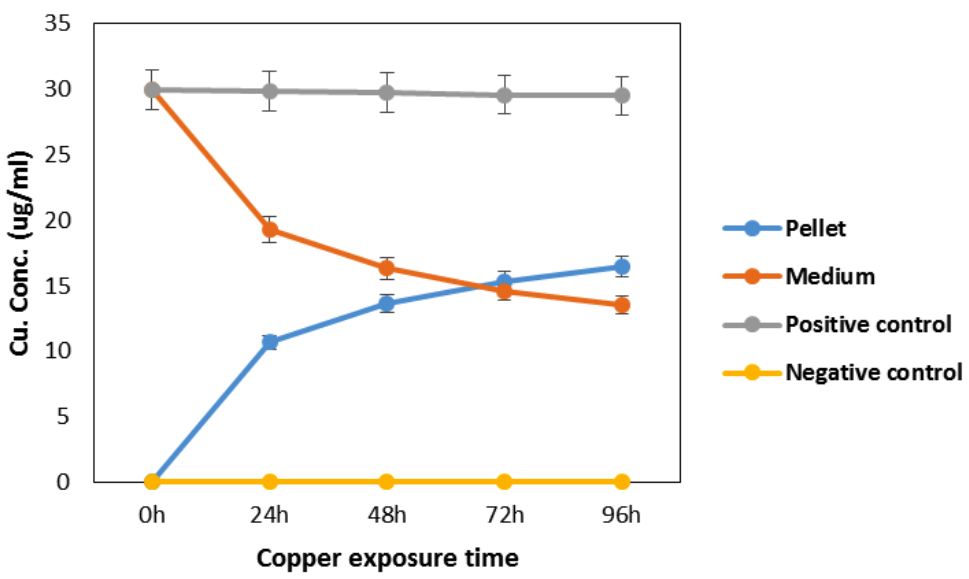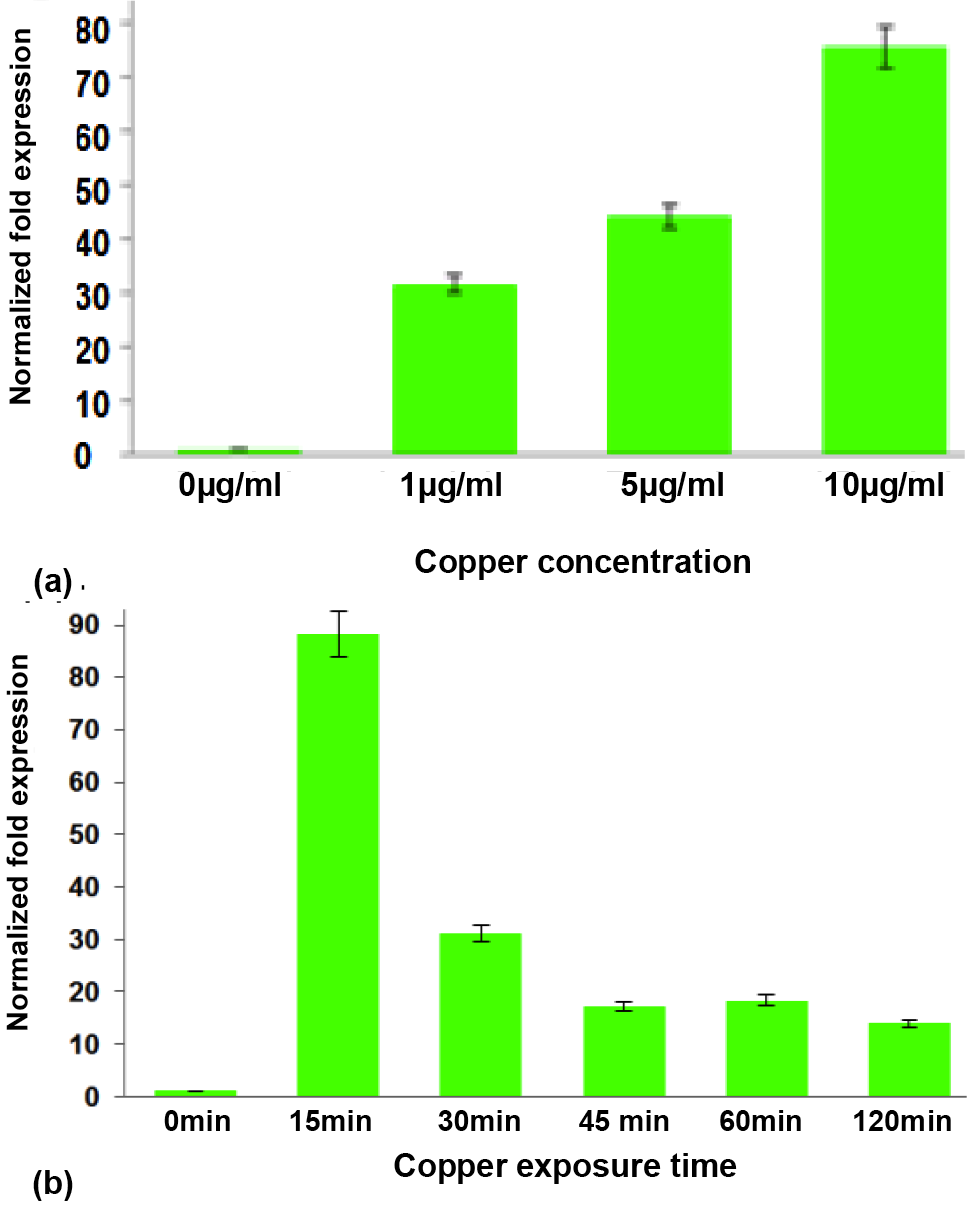Growth Characteristics, Metal Uptake and Expression Analysis of Copper Metallothionein in a Newly Reported Ciliate, Tetrahymena farahensis
Growth Characteristics, Metal Uptake and Expression Analysis of Copper Metallothionein in a Newly Reported Ciliate, Tetrahymena farahensis
Muhammad Tariq Zahid1, Farah Rauf Shakoori2, Soumble Zulfiqar3, Khalid A. Al-Ghanim4 and Abdul Rauf Shakoori3,4*
Growth of T. farahensis in different media. In all media growth of T. farahensis was maximum after three days of inoculation. Organism showed 1.45 and 18.4 folds higher growth in Bold-basal salt medium and modified Neff’s medium compared to wheat grain medium.
Growth curves of T. farahensis at different temperatures. In all three different types of media, 27 oC is optimum temperature with the highest growth rate.
Growth curves of T. farahensis depicting the effect of change in pH. Maximum growth was observed in all three media at pH 7.0 and 7.5.
Effect of copper stress on growth of T. farahensis in different media: a, 1 µg Cu++/ml/day in Bold-basal medium; b, 1 µg Cu++/ml/day in wheat grain medium; c, 10 µg Cu++/ml/day in modified Neff’s medium. Organisms showed an early death under stress conditions. Arrows indicate maximum resistance/tolerance dose of Cu++ for the cells; d, Comparative growth in modified Neff’s medium in the presence of different concentrations of copper ions (1, 5 and 10 µg/ml/day) showed that low concentrations of copper (1 and 5 µg/ml) had a positive effect on growth rate of T. farahensis.
Copper ions uptake by T. farahensis in modified Neff’s medium with 30 µg/ml of copper. Organisms showed maximum uptake during first 24 h. A total of 54.9 % of copper ions were removed by the cells (pellet) from the medium during 96 h of metal exposure. A corresponding decrease in the concentration of Cu++ in the medium indicates that the metal has been taken up by the cells (pellet).
Copper ions uptake by T. farahensis in modified Neff’s medium containing different concentrations of metal ions at different time intervals. a, Maximum metal uptake was observed at 50 µg/ml stress level. At 100 µg/ml, there was a decrease in metal uptake, mainly due to decrease in viable count; b, In terms of metal uptake rate, a bimodal uptake of copper was observed at 5, 10 and 50 µg/ml copper ion concentration. The metal uptake rate was maximum during second quarter in the presence of lower (5 and 10 µg/ml) and during first quarter of first hour in the presence of higher (50 and 100 µg/ml) metal ion concentrations. The second cycle of metal uptake was initiated after 4 hours of copper addition. The metal uptake rate once decreased remained low in the case of 100 µg/ml metal concentration.
Quantitative transcriptional analysis of TfCuMT. a, T. farahensis cultures induced with different copper concentrations, showed maximum expression at transcriptional level in the presence of 10 µg Cu++/ml; b, Inducible transcriptional expression of TfCuMT at 10 µg/ml copper ion at different time intervals. Maximum mRNA level was observed 15 min after copper induction.
















